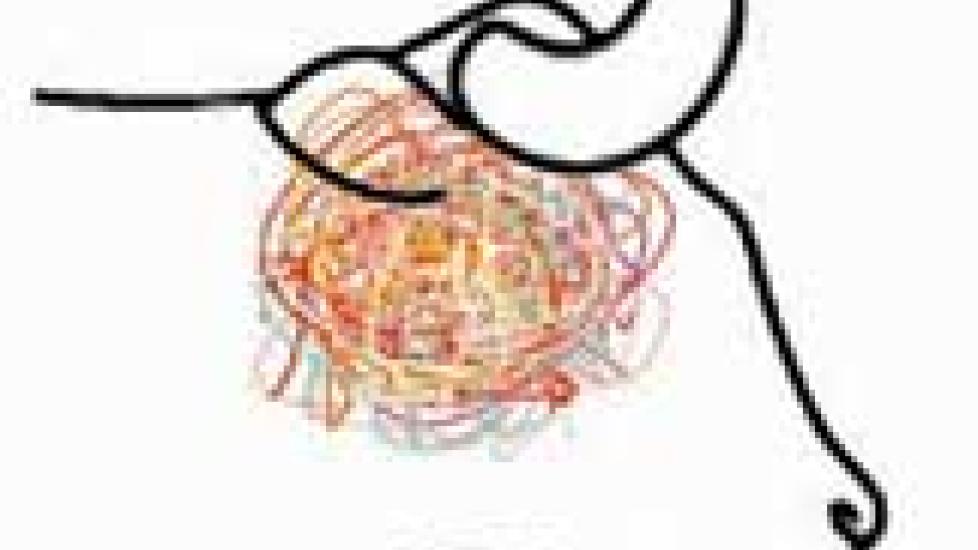Mad Cow Disease
Recently, as I’m sure many of you are aware, the USDA confirmed a case of mad cow disease in a dairy cow in central California. This animal tested positive in a rendering facility, which is a plant where food animals of “lesser quality” are ground for things other than human consumption - like pet food, for example. This means, and the AVMA (American Veterinary Medical Association) has confirmed it, that no part of this animal with mad cow disease entered the human food chain. Whew.
But, whenever this weird disease rears its head in this country (which it has three other times — 2003, 2005 and 2006), I am reminded of how fascinating and terrifying this disease is. Let’s discuss about mad cow disease.
Firstly, the politically correct term for mad cow disease is bovine spongiform encephalopathy (BSE). Let’s try to be sensitive to all those cows out there that truly are mad, shall we? The name BSE describes perfectly what this disease does: causes a disease of the brain (encephalopathy), whereby it has the appearance of a sponge (spongiform).
Naturally, the next question is how the heck does a brain turn into a sponge? Here’s where we start to get creeped out. The infectious agent of BSE is a unique little thing called a prion (rhymes with ion). Prions are proteins — yes, mere proteins.
I cannot repeat this enough, not only because it blows my mind but because people just don’t seem to understand this: The cause of BSE is not a virus or bacteria or any other "live" and self-replicating agent.
Prions are proteins that are folded incorrectly. Let’s take one step back here for a second and meander on a side trip to biochemistry (I know, try not to get too excited). Proteins are large molecules made of a chain of amino acids. This chain folds into delicate shapes to form the final structure of the protein. Prions, for reasons yet unknown, are proteins that have folded incorrectly. Now, what’s the big deal about a stinking rogue protein not folding correctly, you ask? Well, it wouldn’t be a big deal except for the fact that any other protein that touches this prion then becomes incorrectly folded itself, thus "transmitting" this folding problem throughout the nervous system. Oh, and it just so happens that these incorrectly folded proteins cause holes in the tissue. Which is where the term spongiform comes in.
So, how does mad cow disease pass from cow to cow if it is in the brain? This requires a look at the "old way" of feeding animals. Animals that are raised for meat require lots of protein in their diet to build muscle — and build it fast. Cheap forms of protein come from the slaughter by-products of other animals, such as blood and bone meal. Well, when ground up bone meal containing bits and pieces of brain tissue were fed back to cattle, you’ve got a convenient way to pass along prions.
Most people remember, at least from a cursory perspective, the mad cow disease outbreak in the U.K. back in the 1980s and 1990s, where people were eating beef from animals that had this condition, which was then linked to a similar neurologic disease in humans, called variant Creutzfeldt-Jakob disease (vCJD). In 1997, the U.S. adopted a feed ban that prevented the feeding of cattle bone meal and other potentially BSE contaminated parts to other cattle. There is also a ban on the slaughter of "downer" cows — cows that can’t stand or walk.
I myself haven’t encountered any suspect cases of BSE, and unless there’s a horrible outbreak in the U.S., I don’t think I ever will for the following reasons:
1. BSE often takes a long time to develop clinical signs (i.e., mad cow disease symptoms). Many cattle are slaughtered way before they are old enough to show signs. I rarely deal with cattle much over seven years of age. The oldest cow I’ve dealt with so far has been a 14-year-old Angus named Annie, and she’s really more of a pet.
2. Most neurologic bovine cases I see involve bacterial infections, thiamine or calcium deficiency, or (rarely) rabies. Although when you think about it, rabies is far easier to catch and much more prevalent than BSE. Maybe I just won’t think about that.
This little blog has actually only touched the surface about mad cow disease. I didn’t get to talk about how other species like mink, sheep, and even cats have their own types of transmissible spongiform encephalopathies. Perhaps another time? You bring the coffee and I’ll bring the donut holes (because we’re talking about holes in the brain — get it?).

Dr. Anna O’Brien
Image: NLshop & antoshkaforever / via Shutterstock
